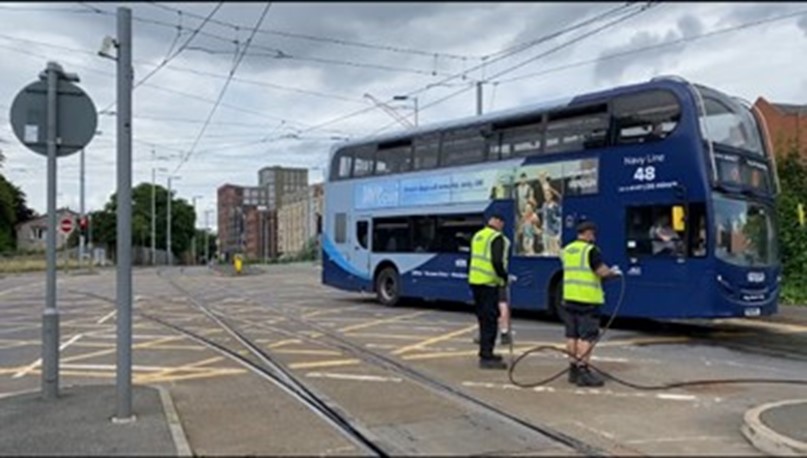Our RM3 assessment of the sector indicates safety management system maturity around the managed to standardised range in general. However, as last year, there was evidence that some tramways were operating towards the ad-hoc range in certain areas which occasionally indicated a failure to comply with reasonably practicable standards.
Where this was the case, we took proportionate formal enforcement action. It should be noted that the sector continues to be extremely receptive to continuous improvement, making sure safety management arrangements continue to mature and sharing and collaborating on RM3 assessments and action plans.
The main RM3 elements scored this year included:
- PI1 Risk assessment where in general assessments were at the managed level with some in the ad hoc region
- RCS1 – Safe Systems of Work where we generally found managed to standardised arrangements in place although there was evidence of informal and ad hoc arrangements at a few tramways, and
- MRA1 – Proactive Monitoring Arrangements where all tramways were at least in the managed category of maturity
During the year we concentrated our proactive regulatory inspection interventions on two main areas at all seven modern tramways. The first examined trackworker safety when working on or near the tramway. The second looked at fitness to work procedures relating to the medical fitness of safety critical staff including tram drivers.
When we inspected track worker safety arrangements we found considerable variability in risk control measures. The main area where improvement was required was around risk assessment. Risk assessments generally ranged from acceptable to poor.
Following our inspections, tramways put in place plans to develop their arrangements in this area. All tramways had reasonable controls in place to manage risks on or near the tramway although some were more effective than others. Trackworker competence management systems were generally professionally managed but not necessarily integrated into the wider safety management system.
Similar variability was found when we tested documented procedures relating to medical fitness to work for safety critical workers. Many tramways had procedures in place to ensure safety critical staff were medically fit to work. However, procedures and documentation could be confusing, with roles and responsibilities not necessarily clearly defined. Our intervention has ensured that all tramways now have appropriate and robust arrangements in place to manage this difficult area.
We have also continued our successful programme of heritage tramway inspection focusing on the same specific RM3 topic areas as the previous year, PI1- risk assessment, OC7 - record keeping and management, and MRA1 and MRA4 - monitoring and management review. We have also attended the UKTram Heritage Tramway Committee, presenting on topics of strategic importance and providing help and guidance where possible.
We strengthen relationships and engage at a strategic level with the Light Rail Safety and Standards Board (LRSSB), including providing help and support where appropriate. We have also entered into a new Memorandum of Understanding with the LRSSB that clarifies roles and sets clear expectations.
We continue to make sure all tramways fully implement the Sandilands RAIB recommendations and have regular and ongoing contact with those tramways who are well advanced in completing work to fit speed control and driver attentiveness systems to their trams. Transport for Greater Manchester, who were subject to two Improvement Notices last year relating to fitting speed control and driver vigilance devices to their trams, continue to make good progress in fitting engineering controls to their fleet.
Using available data sources to identify priorities we are concentrating our inspection work next year on risk assessment and control measures in place at non-motorised user crossings where unfortunately the sector continues to experience fatal and serious accidents to members of the public.
Case Study 3: Track worker safety inspection
During our track worker safety inspections at one particular tramway we found evidence that safe systems of work were informally followed with an over reliance on individuals doing what they felt was best. This was coupled with inspectors observing improvised controls on site leading to potentially unsafe situations arising.
There were several causes for this including inadequate risk assessment of the tasks at hand, lack of instruction and training for some key safety roles, and little evidence of any supervision and monitoring of the work.

We formally required the tramway to develop and implement a robust action plan to address the deficiencies noted within a short period of time. The tramway responded positively to our intervention tackling the issues quickly and effectively and the tramway now has suitable written procedures and practical controls in place to protect track workers undertaking work on or near the tramway.

